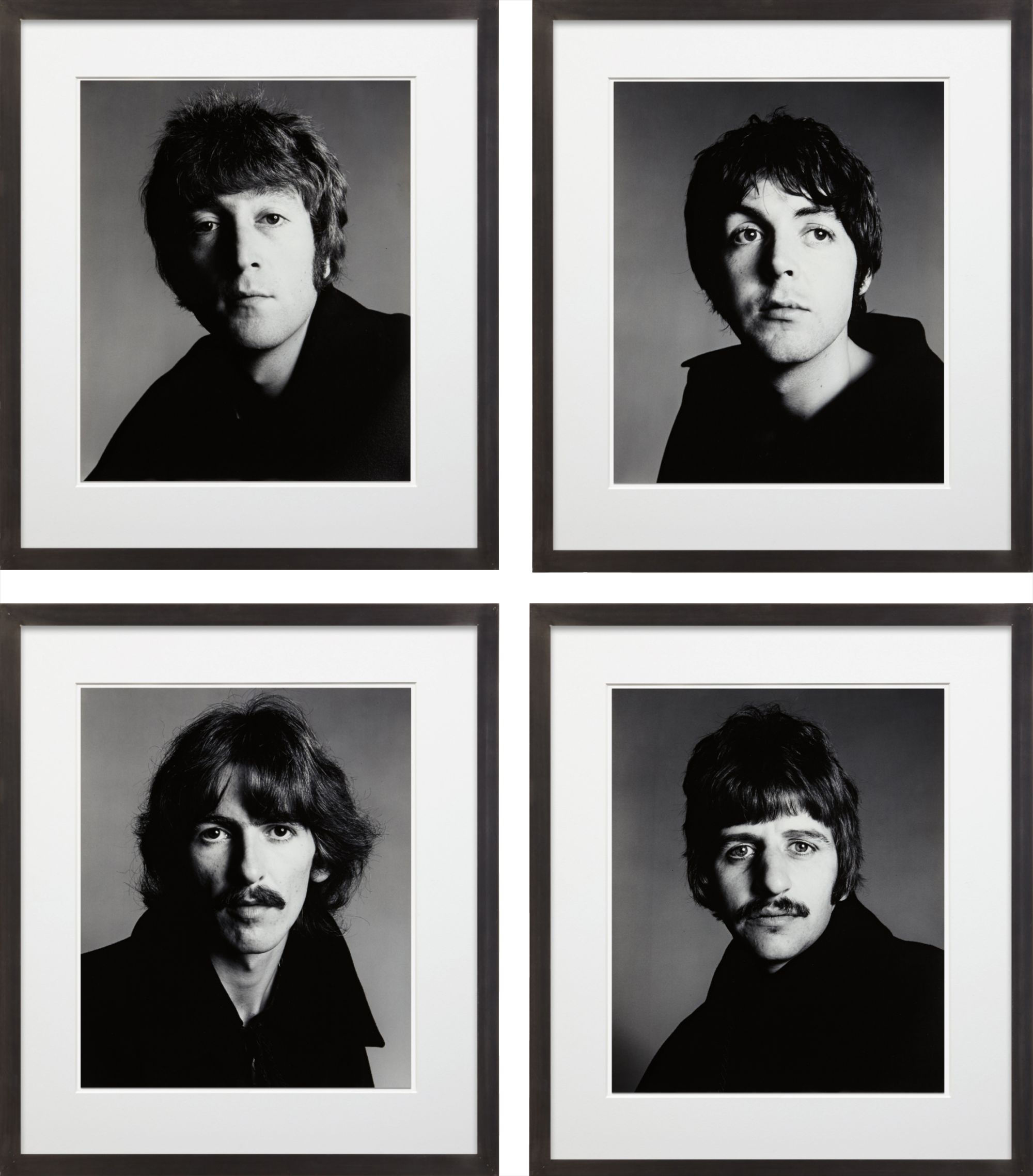

69
Richard Avedon
The Beatles, London, August 11
Full-Cataloguing
By the time of the sitting, Beatlemania had reached its peak on both sides of the Atlantic, with eight LP’s released, millions of albums sold worldwide, and an appointment to Members of the Order of the British Empire by Queen Elizabeth in 1965. Further, their 1967 album, Sgt. Pepper's Lonely Hearts Club Band, was received by thunderous reviews and enormous commercial success. Still considered by many as one of the most revolutionary albums in music’s history, it showed the bands overwhelming ability to innovate and experiment with beat and sound. The record includes influences from psychedelic rock to rhythm & blues, classical music, and country, which combined, yields a sound that is most emphatically theirs.
The contrast of the band’s experimentalism with music and Avedon’s already characteristic minimalism with portraits could not have been more severe. Avedon chose to highlight this contrast by selecting a gray background as opposed to his more heavily utilized white seamless. The choice, was a very conscious one, as he commented: “I only used gray when its Victorian romanticism conflicted with the subject matter.” But more than that, “A gray background does seem to refer to something”, commented Avedon, "a sky, a wall, some atmosphere of comfort and reassurance – that a white background doesn’t permit. With the tonal background, you’re allowed the romance of a face coming out of the dark.” By using the gray background, which he also selected for portraits of Marilyn Monroe and Andy Warhol, Avedon thus allows for an even more intimate reading of the portrait, with the focus on expression and posture, the details of the faces which, by this point, were familiar to all on a global scale. Additionally, the use of a consistent background allowed the four individual pictures to be collaged together to give the effect of the Beatles as one cohesive unit; showing them as a band at maturity, with members whose talents were as accomplished together as they soon would be independently. This collaged image was included as a special “pullout portfolio” in the 9 January 1968 issue of Look.
The set of four portraits offered as the present lot was printed in 1988 and is believed to be among the first sets of the Beatles printed in this format. It was released to the market as a private order, prior to both the formal edition of 12 as well as the dye transfer edition, both of which were realized two years later in 1990.
Richard Avedon
American | B. 1923 D. 2004From the inception of Richard Avedon's career, first at Harper's Bazaar and later at Vogue, Avedon challenged the norms for editorial photography. His fashion work gained recognition for its seemingly effortless and bursting energy, while his portraits were celebrated for their succinct eloquence. "I am always stimulated by people," Avedon has said, "almost never by ideas."
Indeed, as seen in his portraits — whether of famed movie stars or everyday people — the challenge for Avedon was conveying the essence of his subjects. His iconic images were usually taken on an 8 x 10 inch camera in his studio with a plain white background and strobe lighting, creating his signature minimalist style. Avedon viewed the making and production of photographs as a performance similar to literature and drama, creating portraits that are simultaneously intensely clear, yet deeply mysterious.